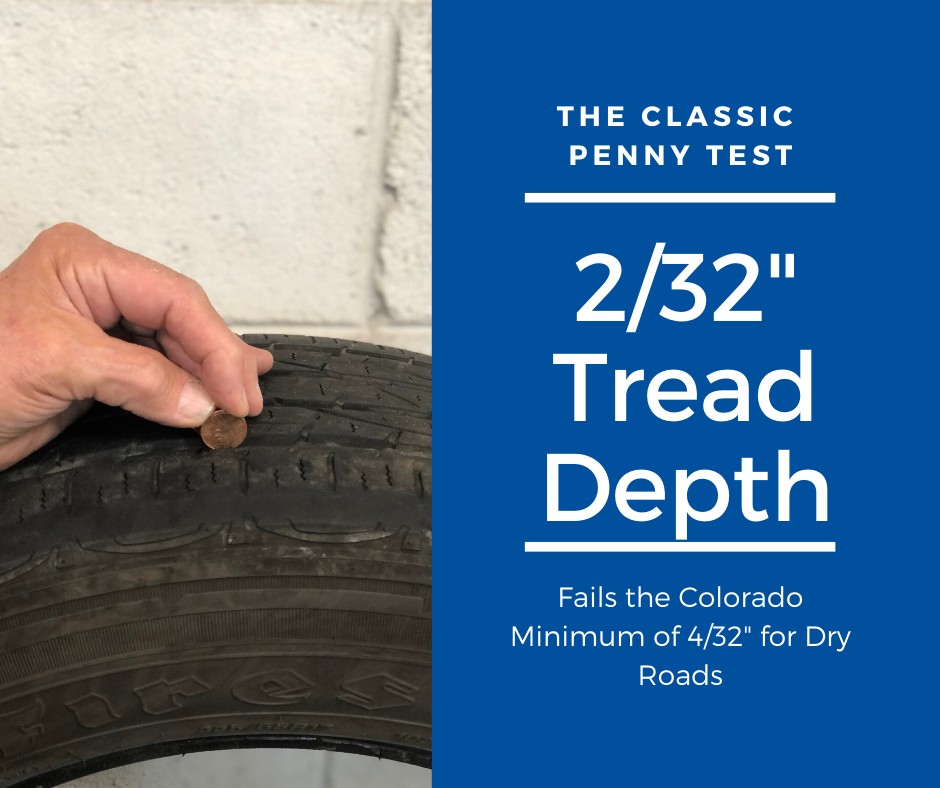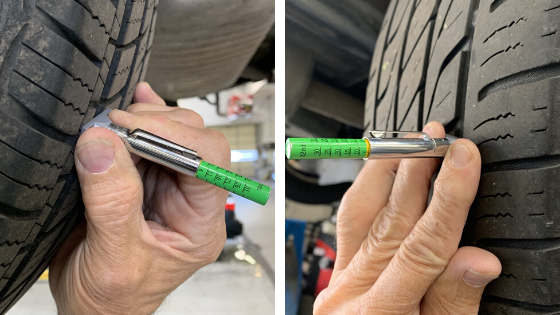It’s October and you are probably saying to yourself, “Here’s Jim again telling me about tires and the Colorado Traction Law.” Well, you are mostly right, but effective August 2, 2019 the law changed as a result of HB1207 by the Colorado Legislature.
In Colorado, it remains that the minimum tread requirement for dry roads is 4/32” (1/8”). Interestingly 1/8” doesn’t even meet the classic “penny test” (which detects when your tread is less than 2/32”).

The major changes to the Colorado Traction Law are that, when the Traction Law is in effect, the amount of tread required to be adequate increased from 4/32” (1/8”) to 6/32” (3/16”). The current requirements for winter driving when the traction law is in effect are: 1) Four- or all-wheel drive with adequate all season or snow tire tread, chains, or auto socks 2) Two wheel drive with adequate tire tread all season or snow tires tread, chains, or auto socks. Fines for driving with inadequate tires when the traction law is in effect begin at $130. If a motorist blocks the roadway while driving with inadequate tires, fines begin at $650.
Chains are hard to install, especially in a snowstorm. Tire socks are easier but have limitations; in snow you can only drive 30mph or less and running on dry pavement will wear them out fast. The price range for a set of auto socks is $70-$140.
The best way to measure tire tread depth is with a tire tread depth gauge. These cost between $3 and $8.

Now that Traction Law requirement is 3/16”, we need a system other than the penny or quarter test (measuring 1/16” and 2/16” respectively) so I am proposing the Addison Eagle test. It goes like this:
Using a quarter with the eagle on the obverse side, insert the quarter into the tread with the eagle’s head pointing to the center of the tire. If the eagle’s head is fully visible above the tread, the depth is less than 3/16”. If any portion of the eagle’s head is covered by the tread then the depth is greater than 3/16”.
.png?width=663&name=The%20Addison%20Eagle%20Test%20-%20Addison%20Auto%20(3).png)
Since we do a fair amount of mountain driving to Grand County in the winter, I have always used winter tires; however, last year I didn’t remove them as soon as the season was over and consequently wore them out in just one season. Since winter tires are made of a soft compound, they wear more quickly on dry roads and in warmer weather. When it comes to snow or ice on the ground, all-season tires simply don't compare to winter tires which can stop more quickly. It is great to make the investment of winter tires, but make sure to take them off when the winter season is over.
Enjoy the season and stay safe! Schedule your next service visit and we can help with you prepare for winter driving.
-Jim Addison and your friends at Addison Auto Repair and Body Shop



